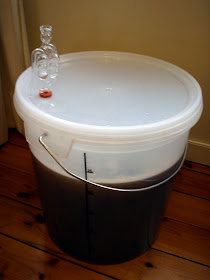I read many food blogs, I listen to several podcasts, I'm on Pinterest and it's all about pull-a-part bread these days so I had to try it myself.
Is a really fun bread to make although not the most straightforward one, it's like playing tetris with dough!
But believe me it worth the effort. I made a garlic herby version, but it can be made with cheese, olives, cinnamon, nuts, chocolate, fruit... OK, I have to stop now, I'm starting to drool.
Because of the layers, the crumb is incredible tender, moist, light and very addictive. Trust me it's seriously good!
 |
| The lavender it's not relevant, but it's from the garden and it smells lovely. |
Recipe adapted from
here
4 cups all-purpose flour
a pinch of salt
2 tsp of dry yeast
1 1/2 cup lukewarm milk
1/2 cup of olive oil
1 tsp of dry oregano
1 tsp of dry basil
5 grated garlic cloves
A pinch of salt
 |
| I know, it looks messy, but aren't they the best things in life? |
In your mixer bowl cream the yeast with a little milk. When the yeast has dissolved pour the rest of the milk.
Slowly add the flour mixing until the dough comes clean from the sides of the bowl. Place the dough into a greased bowl and leave to rest at room temperature until it doubles in volume.
When risen divide it into 12 balls and flatten them.
To make the filling mix the grated garlic, olive oil, herbs and seasoning and brush over the flatten dough. Seal the pocket with a fork or with your fingers and place it in a greased loaf pan. Do the same with the rest.
Leave again to rest at room temperature for 1/2 hour and bake in preheated oven, at 190C, for about 35-40 minutes.
Leave to cool a little and get it out of the pan.


















